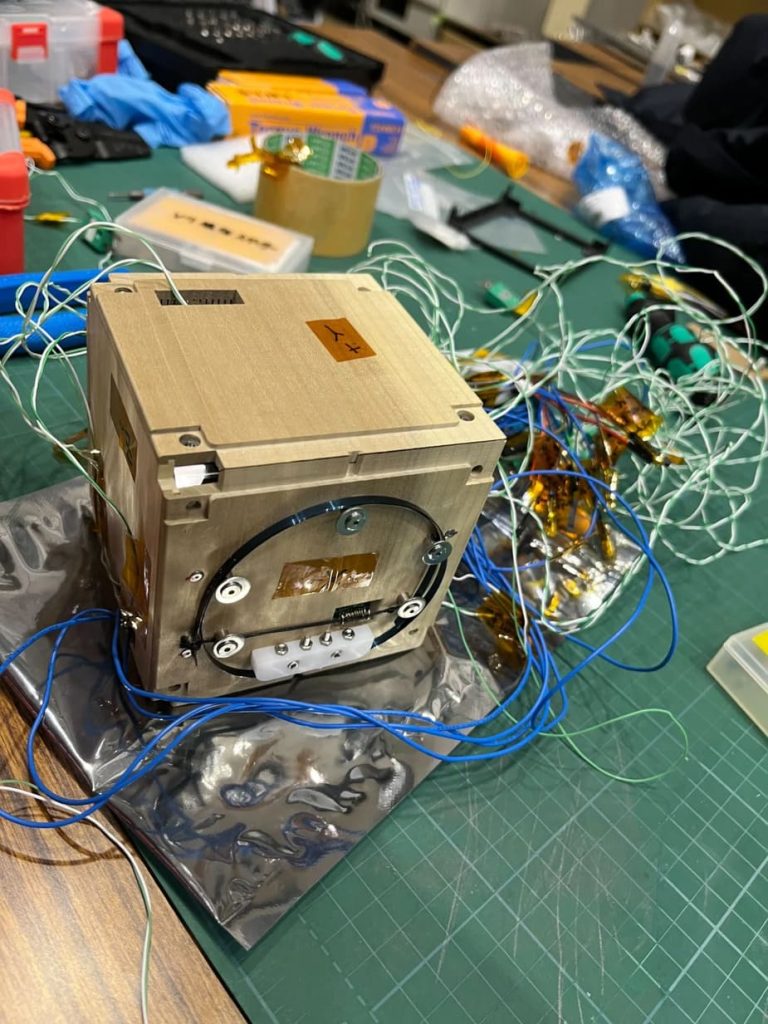Japan Builds World’s First-Ever Wooden Satellite for Eco-Friendly Space Exploration
20th Feb 2024
A group of Japanese researchers have developed a peculiar spacecraft, known as the LignoSat probe, that is constructed entirely out of magnolia wood. After carrying out experiments on the ISS, the researchers found that the wood was highly stable and crack-resistant. The team, which consists of research workers from Kyoto University and logging company Sumitomo, is now finalizing plans to launch the wooden satellite via a US rocket later in the summer.
The purpose of building a satellite out of biodegradable materials like wood is to explore the possibility of using eco-friendly alternatives to the metals currently used in satellite construction.
Wood Samples Exhibit Remarkable Resilience in Space Conditions
According to Japanese astronaut and Kyoto University aerospace engineer Takao Doi, all satellites that reenter the Earth’s atmosphere produce minuscule alumina particles that can remain in the upper atmosphere for a considerable number of years, ultimately affecting the planet’s environment. To tackle this issue, Kyoto-based research workers launched a project to assess the viability of using different kinds of wood to withstand the pollution-related challenges of space launch as well as long-term flights in orbit.
In initial laboratory tests that simulated space conditions, samples of wood were highly resilient, showing no signs of damage, decomposition, or detectable changes in mass. Koji Murata, the project leader, was astounded at the ability of wood to withstand such conditions.
Samples were transported to the ISS following the lab tests, where exposure trials were conducted for nearly a year before being returned to Earth. Despite being subjected to harsh conditions in space, the samples displayed minimal evidence of damage, which Murata explained could be due to the absence of oxygen in space that could lead to the burning of wood, as well as the lack of living organisms that could cause it to decompose.
Kyoto Wooden Satellite: Assessing Durability and Deformation While in Orbit

The researchers evaluated numerous types of wood, such as Japanese cherry, but found that magnolia wood exhibited the highest level of durability. The wood has now been utilized to construct the Kyoto wooden satellite, which is set to carry out several experiments to assess its performance in orbit, Murata noted.
According to Murata, one of the satellite’s missions is to assess the wooden structure’s deformation in space. While wood is stable and durable in one direction, it may be susceptible to changes in size and cracking in another direction.
Murata also stated that an ultimate decision on the launch vehicle is still pending, and the options have been limited to a flight on an Orbital Sciences Cygnus cargo spacecraft to the ISS in the summer or another SpaceX Dragon mission in the latter part of the year. The probe, which is as small as a coffee mug, is set to operate in space for at least half a year before reentering the upper atmosphere.







Thank you for your comment! It will be visible on the site after moderation.